Related Research Articles

Jean Maurice Eugène Clément Cocteau was a French poet, playwright, novelist, designer, filmmaker, visual artist and critic. He was one of the foremost creatives of the surrealist, avant-garde, and Dadaist movements; and one of the most influential figures in early 20th-century art as a whole. The National Observer suggested that, “of the artistic generation whose daring gave birth to Twentieth Century Art, Cocteau came closest to being a Renaissance man.”

Marie Antoine (Antonin) Carême was a French chef and an early practitioner and exponent of the elaborate style of cooking known as grande cuisine, the "high art" of French cooking: a grandiose style of cookery favored by both international royalty and by the nouveau riche of Paris. Carême is often considered one of the first internationally renowned celebrity chefs.

The Salon d'Automne, or Société du Salon d'automne, is an art exhibition held annually in Paris, France. Since 2011, it is held on the Champs-Élysées, between the Grand Palais and the Petit Palais, in mid-October. The first Salon d'Automne was created in 1903 by Frantz Jourdain, with Hector Guimard, George Desvallières, Eugène Carrière, Félix Vallotton, Édouard Vuillard, Eugène Chigot and Maison Jansen.

Albert Gleizes was a major 20th-century French artist, theoretician, philosopher, a self-proclaimed founder of Cubism and an influence on the School of Paris. Albert Gleizes and Jean Metzinger wrote the first major treatise on Cubism, Du "Cubisme", 1912. Gleizes was a founding member of the Section d'Or group of artists. He was also a member of Der Sturm, and his many theoretical writings were originally most appreciated in Germany, where especially at the Bauhaus his ideas were given thoughtful consideration. Gleizes spent four crucial years in New York, and played an important role in making America aware of modern art. He was a member of the Society of Independent Artists, founder of the Ernest-Renan Association, and both a founder and participant in the Abbaye de Créteil. Gleizes exhibited regularly at Léonce Rosenberg's Galerie de l’Effort Moderne in Paris; he was also a founder, organizer and director of Abstraction-Création. From the mid-1920s to the late 1930s much of his energy went into writing, e.g., La Peinture et ses lois, Vers une conscience plastique: La Forme et l’histoire and Homocentrisme.
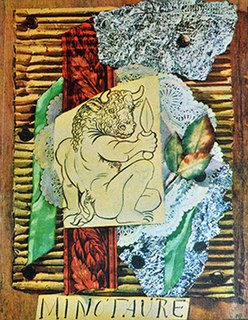
Minotaure was a Surrealist-oriented magazine founded by Albert Skira and E. Tériade in Paris and published between 1933 and 1939. Minotaure published on the plastic arts, poetry, and literature, avant garde, as well as articles on esoteric and unusual aspects of literary and art history. Also included were psychoanalytical studies and artistic aspects of anthropology and ethnography. It was a lavish and extravagant magazine by the standards of the 1930s, profusely illustrated with high quality reproductions of art, often in color.
Tériade is the nom de plume of StratisEleftheriades, a native of Mytilene who went to Paris in 1915 at the age of eighteen to study law, but who instead became an art critic, patron, and, most significantly, a publisher.
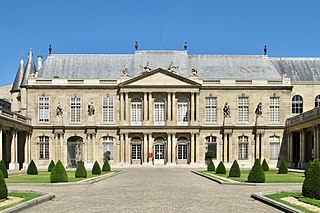
An hôtel particulier is a grand townhouse, comparable to the British townhouse or mansion. Whereas an ordinary maison (house) was built as part of a row, sharing party walls with the houses on either side and directly fronting on a street, an hôtel particulier was often free-standing and, by the 18th century, would always be located entre cour et jardin – between the cour d'honneur and the garden behind. There are hôtels particuliers in many large cities in France.

Philippe Apeloig is a French graphic designer and typographer born in Paris in 1962.
Christian Zervos was a Greek-French art historian, critic, collector, writer and publisher.
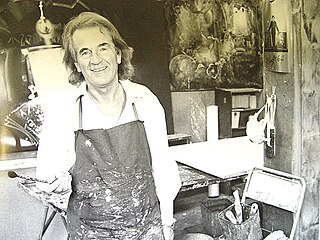
Augustin François Guille, called Archiguille was a French painter.
Cahiers d'Art is a French artistic and literary journal founded in 1926 by Christian Zervos. Cahiers d'Art is also an eponymous publishing house which has published many monographs on artists living in France in the first half of the twentieth century. Publications include the definitive catalogue of works by Pablo Picasso, Pablo Picasso par Christian Zervos, in 33 volumes, with over 16,000 images.
Joseph-Marie Lo Duca was an Italian-born journalist, novelist, art critic, and film historian best known as the co-founder in 1951 of the influential French magazine Cahiers du Cinéma with André Bazin, Jacques Doniol-Valcroze, and Léonide Keigel.

Jean Perrot was a French archaeologist who specialised in the late prehistory of the Middle East and Near East.
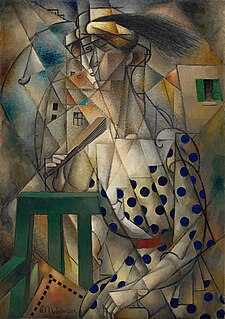
Femme à l'Éventail is an oil painting created in 1912 by the French artist and theorist Jean Metzinger (1883–1956). The painting was exhibited at the Salon d'Automne, 1912, Paris, and De Moderne Kunstkring, 1912, Amsterdam. It was also exhibited at the Musée Rath, Geneva, Exposition de cubistes français et d'un groupe d'artistes indépendants, 3–15 June 1913. A 1912 photograph of Femme à l'Éventail hanging on a wall inside the Salon Bourgeois was published in The Sun, 10 November 1912. The same photograph was reproduced in The Literary Digest, 30 November 1912.
Pierre Emile Gabriel Lelong was a neo-Impressionist painter based in France, winner of the Grand Prix des Peintres Témoins de Leur Temps in 1972. He is considered one of the postwar group of artists referred to as “La Nouvelle Ecole de Paris.”
The Kid (1991) is a contemporary artist who questions social determinism and the frontier between innocence and corruption in modern societies. Half Dutch and half Brazilian, The Kid lives and works both in Paris and Amsterdam where he has, respectively, his painting and sculpture studios.
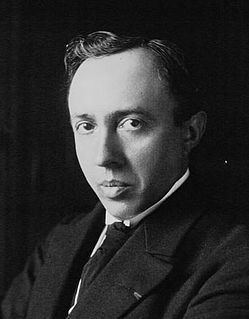
Raymond Escholier, real name Raymond-Antoine-Marie-Emmanuel Escolier, was a French journalist, novelist and art critic. He was curator of the Maison de Victor Hugo and of the Petit Palais.
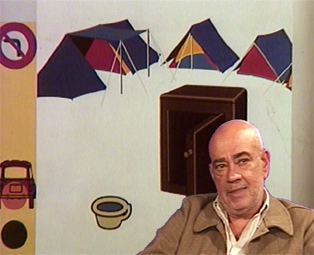
Hervé Télémaque, is a French painter of Haitian origin, associated with the surrealism and the narrative figuration movements. He has lived and worked in Paris since 1961.
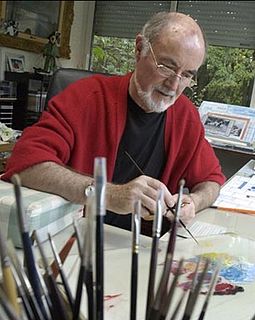
Raphaël Toussaint, is a French painter residing in the Vendée department. Landscape designer, he practices “poetic reality”
References
- 1 2 3 John Russell (9 October 1988). "Flair for the Grand Gesture: Celebrating a Magazine". The New York Times. Retrieved 19 May 2015.
- 1 2 3 Mostafa Heddaya (2 August 2013). "Remembering "Verve," the Journal That Helped Define Modernism". Hyperallergic. Retrieved 19 May 2015.